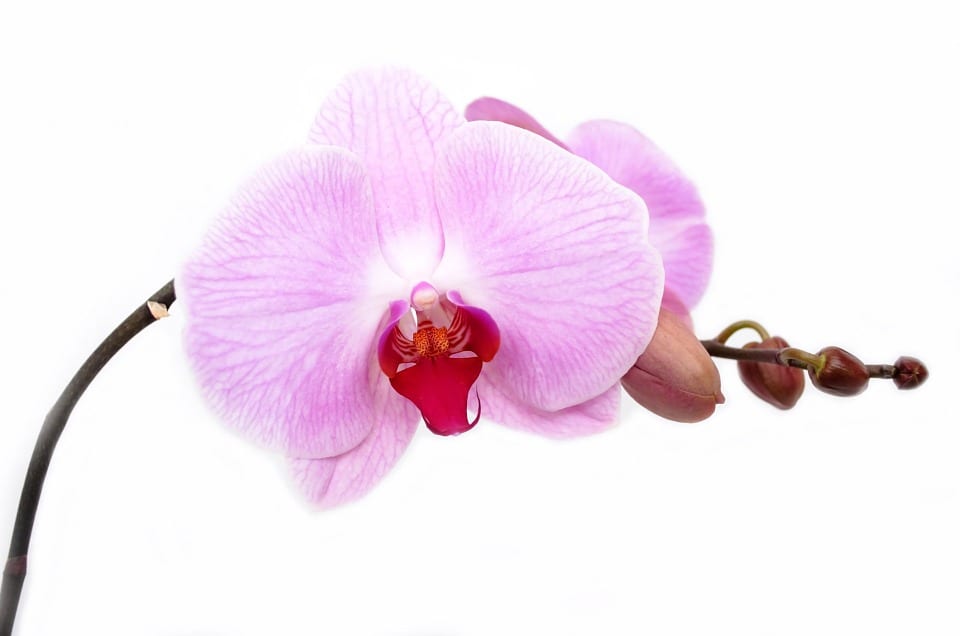
Dendrobium Berry Oda is a fascinating variety of orchid that nature has given us. With its stunning flowers and unique characteristics, this orchid has become a popular choice among plant enthusiasts.
In this article, we will delve into the various aspects of the plant, including its characteristics, care requirements, suitable soil conditions, watering needs, pruning techniques, different types available, and control of common pests.
Characteristics of Dendrobium Berry Ode

It stands out for its vibrant and colorful flowers. The flowers exhibit a variety of hues, ranging from soft pastels to bold and vibrant hues.
The petals are thin and elongated, forming an elegant and striking arrangement. This particular variety also has a lovely aroma with a hint of honey, which further enhances its appeal. Its flowers are magenta in various shades.
The foliage is equally magnificent. The dark green leaves, with a glossy texture, provide a striking contrast to the vibrant flowers.
The plant has long, thin pseudobulbs that store moisture and nutrients, favoring their survival in adverse conditions.
These plants use rocks or fallen trees as anchors, have roots that can be a few meters long, and grow in or on rocks. They feed on nearby decaying plants including their own dead tissue.
Something important to know is that this species of orchid grows during the summer, It remains dormant in the winter and blooms at the beginning of spring, when there is rapid growth of new roots. It can grow up to 50 cm tall.
Care of Dendrobium Berry Oda
Dendrobium Berry Oda requires some specific care to thrive and flower to its full potential. Here are some essential guidelines:
soil requirements
As for soil, Dendrobium Berry Oda prefers a well-drained medium. An orchid mix that includes bark, sphagnum moss, and perlite or vermiculite is an ideal choice. This type of soil allows good aeration and prevents excessive moisture retention.
Irrigation
Proper irrigation It is crucial to the health of Dendrobium Berry Oda. This orchid prefers a moderately humid environment. Watering should be done once the top layer of soil is slightly dry.
Avoid excessive watering, as it can cause root rot. Orchid enthusiasts often achieve successful results using the "soak and dry" method, allowing the roots to dry between watering sessions.
Pruning
To maintain the health and appearance of Dendrobium Berry Oda, regular pruning is necessary. After the flowering period ends, remove any wilting or faded flowers and prune any dead or damaged branches.
Proper pruning helps stimulate new growth and prevents the spread of disease.
Flowering
The flowering stage begins in early spring and lasts until late winter, although many orchids do not have a flowering season and flowers can be produced at any time of the year if proper conditions and care are met.
Something to keep in mind is that after the flowers withered It is important to cut the stem just above the second node visible below the faded flowers. That way a new flowering lateral shoot can develop.
Terrestrial orchids grown outdoors will generally bloom in the summer months, and can last for several months.

Planting young orchids
Many times small seedlings, when they have developed good roots, place them in fertilizer for orchids.
You should water them sparingly at first and spray them daily; use a fertilizer exclusively for them. It is essential that it receives good levels of light in winter as it is very important to promote flowering.
In summer, you should place it in a shady place and protect it from direct sunlight. Terrestrial orchids, if you are going to plant them outdoors, You should do it in semi-shade, without direct midday sun.
Make sure not to plant orchids near trees or shrubs larger because their roots are a competition for water and nutrients. Fall is the best time to plant them.
Pest control in dendrobium Berry Oda
Like all plants, Dendrobium Berry Oda is prone to certain pests. However, with proper care and maintenance, infestations can be minimized or eliminated. Some common pests that affect Dendrobium Berry Oda include:
- Aphids: They are small insects that feed on the sap of the plant, causing wilting and delayed growth. Regularly inspect your orchid for aphids and, if detected, use an organic insecticidal soap or a homemade mixture of water and mild liquid soap to remove them.
- Red mites: They are small pests that create fine webs on the leaves and suck the plant's juices. Introduce predatory mites or treat the infested plant with insecticidal soap to control red mites.
- Mealybugs: They are soft, oval-shaped insects that produce a powdery substance on the leaves. Remove them manually using a cotton swab soaked in alcohol or treat the plant with neem oil-based insecticides.
Types of Dendrobium Berry Ode
- Dendrobium Berry Oda offers a variety of beautiful varieties. While the characteristics mentioned above are common in all Dendrobium Berry Oda plants, there are some varieties with unique traits. Some popular types include:

- Dendrobium Berry Ode 'Emma White': This variety produces very pretty, fresh, white flowers. It is a species that grows without any problem and is very easy to grow. Therefore they are known as orchid for beginners.
Water them well, slightly spaced out and you will be rewarded with beautiful flowers.

- Dendrobium Berry Ode 'Rosie': Features pale pink flowers with a captivating fragrance, adding a touch of elegance to any space.

- Dendrobium Berry Ode 'Crimson': The 'Crimson' variety displays bold, deep red flowers that captivate with their intense color.
By following the guidelines provided in this article, you can ensure that your Dendrobium Berry Oda orchid thrives and becomes a stunning addition of elegance and color to your indoor or outdoor garden.
With its captivating flowers, charming fragrance, and relatively low maintenance requirements, Dendrobium Berry Oda is truly a remarkable orchid variety.